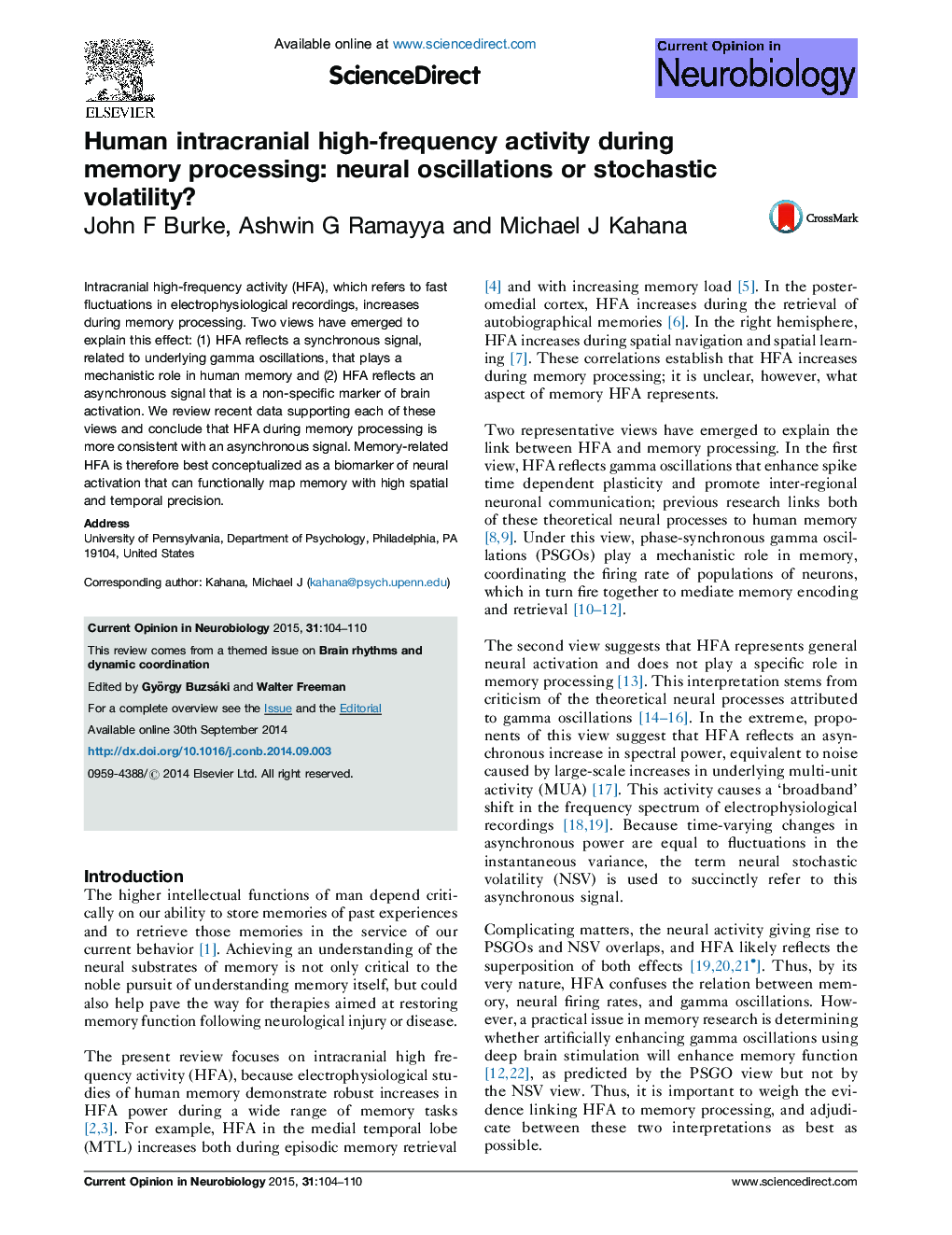| کد مقاله | کد نشریه | سال انتشار | مقاله انگلیسی | نسخه تمام متن |
|---|---|---|---|---|
| 6266214 | 1614518 | 2015 | 7 صفحه PDF | دانلود رایگان |
- Increases in intracranial high frequency activity (HFA) mark memory processing.
- Interpreted as gamma oscillations, HFA is assumed to mechanistically mediate memory.
- Recent evidence challenges this traditional view.
- HFA is more consistent with neural noise, or stochastic volatility.
Intracranial high-frequency activity (HFA), which refers to fast fluctuations in electrophysiological recordings, increases during memory processing. Two views have emerged to explain this effect: (1) HFA reflects a synchronous signal, related to underlying gamma oscillations, that plays a mechanistic role in human memory and (2) HFA reflects an asynchronous signal that is a non-specific marker of brain activation. We review recent data supporting each of these views and conclude that HFA during memory processing is more consistent with an asynchronous signal. Memory-related HFA is therefore best conceptualized as a biomarker of neural activation that can functionally map memory with high spatial and temporal precision.
Journal: Current Opinion in Neurobiology - Volume 31, April 2015, Pages 104-110
